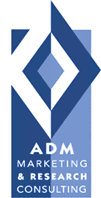"Pharmaceutical Companies Branding for a 'Pull-Through' Strategy"
Momentum
(A Publication Exclusively for Clients and Friends of CDB Research & Consulting), Summer 1999
< < Back to Press Room
Some years ago, a word association game with the term "brand," would have yielded responses such as "Coca-Cola," "Levi's," or "Chanel." More recently, we have seen consumer recognition of component brands like Intel, Pentium or Scotchgard. In all of these cases, the target audience is the end-user, but brand-building strategy has now migrated to the world of ethical pharmaceuticals, or prescription drugs. Brands are now being promoted to consumers in spite of the fact that they are not available over-the-counter. Nevertheless, for the past few years, pharmaceutical companies have actively pursued this "pull through" strategy of promoting prescription drugs directly to consumers, in the hope that they will ask their physicians for a particular brand. But has it worked?
After several years of massive spending in this effort, advertisers may finally be seeing some progress. In 1997, pharmaceutical marketers spent nearly $850 million promoting 99 products directly to the consumer, a 42% increase over the previous year. A recent survey by CDB Research & Consulting shows that advertising awareness for these drugs is nearly universal (96% are aware of at least one of 31 top-advertised drugs included in the survey), and nearly half of these aware consumers took some action (46%). That is, they asked their doctors about a drug they saw advertised, or recommended that a friend or relative do so.
This marketing strategy, a departure from the traditional "push through" strategy, directed at doctors, appears to be most effective among women and baby boomers. Fewer than one in three men (29%) took some action in response to their awareness of a particular pharmaceutical product, while more than half the women asked about, or recommended at least one product (55%). Similarly, more than half of the baby boomers (52%) asked about or recommended a drug, while about a third of younger people (39%) and those who are 55 or older (36%) took such actions.
Allergy medications seem to be the most successful in building brand awareness through advertising, and, in fact, getting the most "bang for their bucks." Allegra, representing the second highest advertising spending level, and Claritin, the third highest spender, achieved the highest brand awareness: 66% and 72%, respectively. About one in five people who know about Claritin have asked about or recommended it (21%), while about half as many of those who know about Allegra took some action (12%). Another allergy remedy, Flonase, was the sixth highest spender for direct-to-consumer advertising, and achieved a 43% brand awareness. However, about one in five of these consumers (22%) took some action.
On the other hand, Pravachol, a drug which lowers cholesterol, was the highest spender, at about $66.5 million, but only one in three consumers have heard of this product (31%). Moreover, barely one in ten people who do know this product asked about it or recommended it (9%). Among people 55 and older - the group for which this product is likely to be most relevant - awareness is higher: 42%, vs. 32% among baby boomers and 17% among younger adults. However, only one out of eight aware older adults (13%) asked about this product or recommended it. Zocor, a similar drug, was the fifth highest spender, and achieved similar results.
While mass market advertising has certainly built awareness for some of these products - Claritin and Allegra - it is clear that such a "scattergun" approach is not as effective for "niche" products like Pravachol or Zocor. Those products with smaller market bases might spend their marketing and promotional dollars better with well-targeted media. That will yield a more relevant audience, which, when combined with brand awareness, will produce better results.
< < Back to Press Room
|

